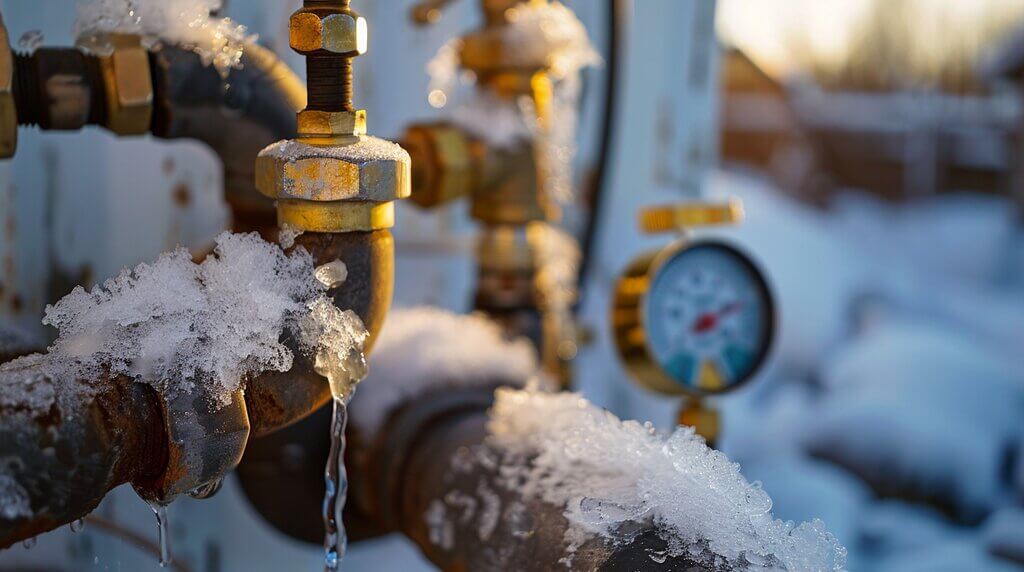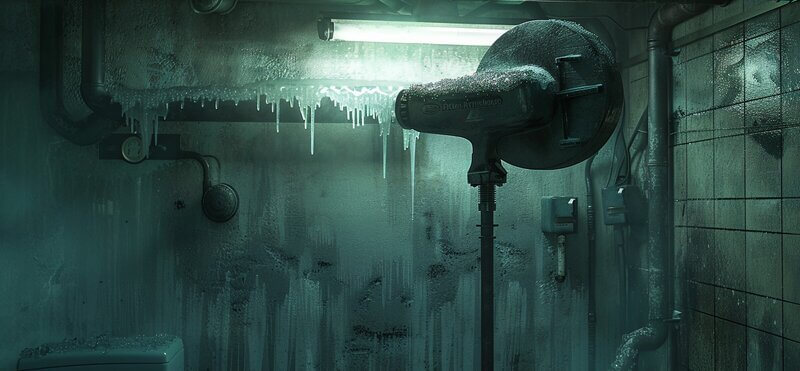When pipes freeze, act quickly to avoid damage. Locate vulnerable pipes in unheated areas, along exterior walls, and in cold regions. Prevent freezing by adding insulation, heating cables, and fixing leaks. Maintain a consistent home temperature and let faucets drip in extreme cold.
If pipes freeze, identify the blockage, turn off water, and apply heat carefully to thaw. Check for leaks post-thaw and consider insulating exposed pipes. Monitoring water pressure is vital. Swift action can save your plumbing from costly repairs.
Identifying pipes most likely to freeze is essential for implementing effective preventative measures and minimizing potential damage caused by frozen pipes.
Outdoor water pipes, like water sprinkler lines and swimming pool supply lines, are at high risk due to exposure to extreme cold. Water pipes located in unheated areas such as basements, attics, garages, and crawl spaces are also prone to freezing. Additionally, pipes under kitchen or bathroom sinks, along exterior walls with insufficient insulation, and in regions prone to severe cold are susceptible.
Recognizing these vulnerable pipes allows for targeted insulation, heating solutions, and proactive maintenance to prevent freezing and avoid costly repairs. Regular inspection and awareness of these high-risk areas are key to safeguarding your plumbing system during winter.

To safeguard your plumbing system from the damaging effects of frozen pipes, proactive preventative measures are essential to implement before the onset of cold weather. Installing heating cables around pipes in crawlspaces, adding extra insulation to pipes in unheated areas, and repairing any cracks or leaks in the plumbing are vital steps to prevent freezing.
It is also recommended to turn off water supply lines to appliances in unheated spaces, disconnect outside water hoses, and insulate pipes along exterior walls with insufficient insulation. By taking these innovative precautions, you can greatly reduce the risk of frozen pipes and avoid the inconvenience and potential costly damage they can cause during winter months.
Upon the arrival of winter, it is crucial to take proactive measures to prevent frozen pipes and safeguard your plumbing system.
To guarantee your pipes remain unfrozen during the cold season, maintain a consistent thermostat setting throughout your home. It is advisable to keep garage doors closed if there are water lines present and allow cold water to drip from faucets served by exposed lines. Avoid setting your thermostat lower than 55 degrees Fahrenheit to uphold a suitable temperature for your pipes.

When faced with frozen pipes, it is essential to take immediate steps to safely thaw them and prevent potential damage to your plumbing system.
To thaw frozen pipes, start by identifying the affected pipes through little to no water trickling out of faucets. Turn off the water supply to reduce pressure on the frozen pipes.
Then, use a hairdryer or heat lamp to gently thaw the frozen area. Another method is to wrap a heavy towel around the pipe and pour hot water over it.
For more severe cases, consider running a garden hose through the pipe and pouring hot water until the ice melts. These methods can help restore water flow and prevent further issues with your plumbing system.

After successfully thawing frozen pipes, it is crucial to thoroughly inspect the exposed pipes for any signs of leaks and assess the surrounding areas for damp patches on walls, ceilings, or floors.
Taking these steps after thawing frozen pipes can help prevent further damage and guarantee the proper functioning of your plumbing system. Remember, proactive maintenance is key to avoiding the hassle and expense of dealing with frozen pipes in the future.
When dealing with frozen pipes, it's important to exercise caution and consider safe thawing methods. Using a space heater to thaw frozen pipes can be risky due to the high heat output, which may damage the pipes or surrounding materials.
It is not recommended to use a space heater for this purpose as there are safer alternatives available, such as using a hairdryer or heat lamp to slowly thaw the frozen area.
To locate hidden pipes susceptible to freezing, start by identifying areas where pipes are exposed to cold air or in unheated spaces. Check for pipes in basements, attics, crawl spaces, and exterior walls with insufficient insulation.
Use a thermal imaging camera to detect temperature differences or hire a professional plumber to conduct a thorough inspection.
Confirm proper insulation and heating measures are in place to prevent freezing and potential damage to the pipes.
While using a blowtorch to thaw frozen pipes may be effective, it is not recommended due to the risk of fire, damage to pipe materials, and potential injury. Safer methods such as using a hairdryer, heat lamp, or hot water are advised.
Always prioritize safety and consult with a professional if unsure. Preventive measures like insulation and maintaining proper temperatures can help avoid pipe freezing issues altogether.
If your pipes burst due to freezing, the immediate response is vital. Start by shutting off the main water supply to prevent further damage.
Drain the water from the affected pipes by turning on faucets. Remove any standing water to prevent mold growth.
Contact a professional plumber to repair the burst pipes, assess the extent of the damage, and guarantee proper restoration. Document the damage for insurance purposes and take steps to prevent future incidents.
To prevent pipes from freezing in a vacant property, there are several steps you can take: